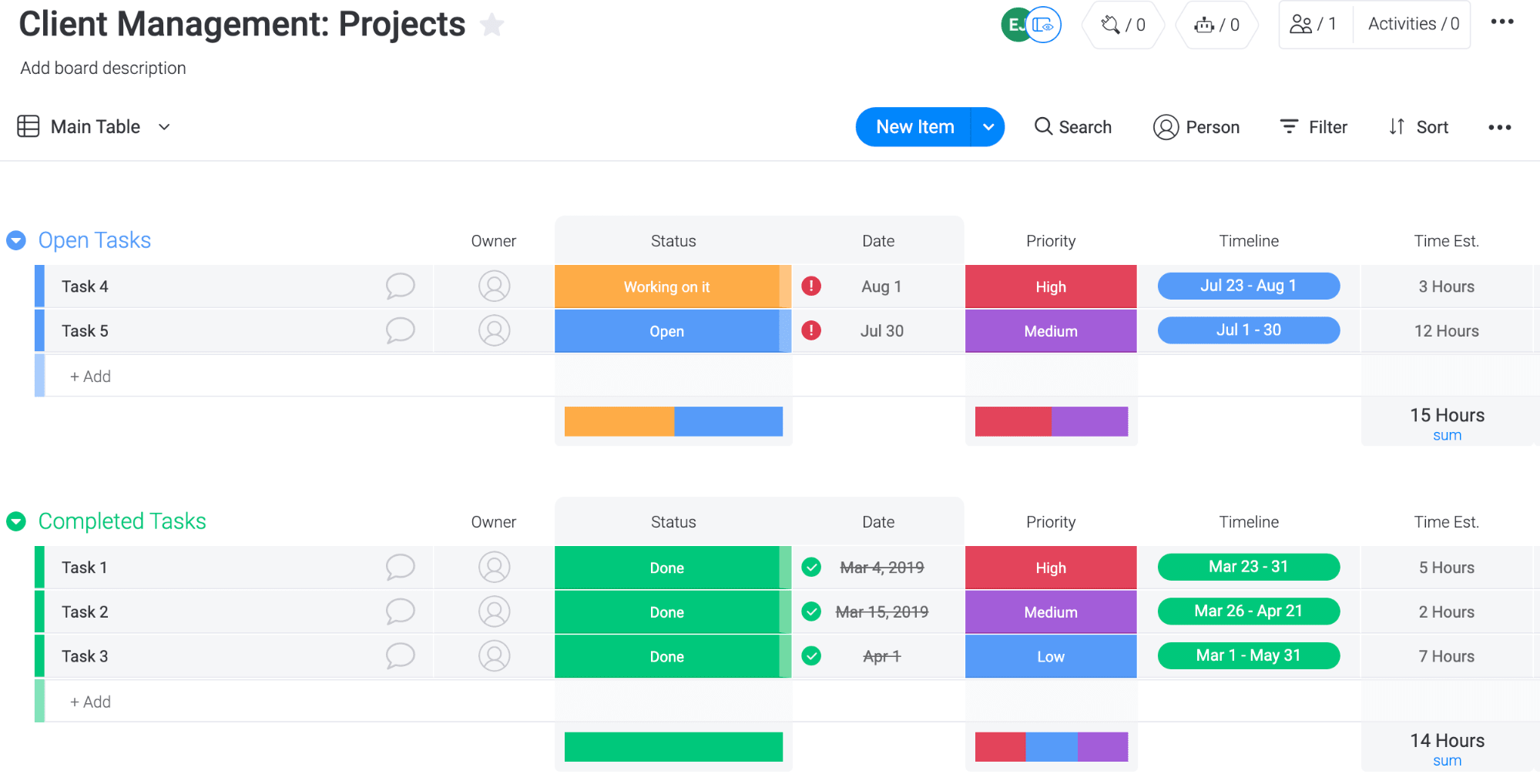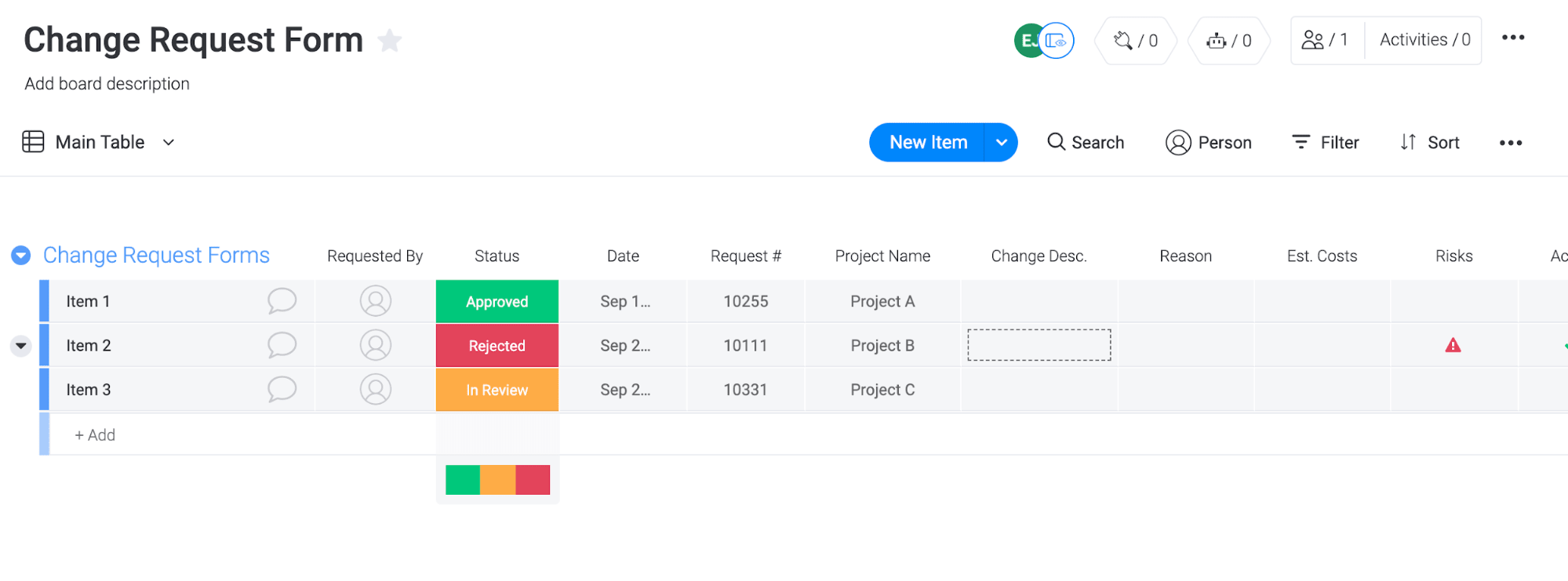Only 19% of companies say they’re able to reliably deliver successful projects “most of the time.”
Ouch.
That’s worse than my grade in calculus, and I got an eraser thrown at me in that class.
But how can a few project management principles improve this?
Well, let’s examine the top 3 reasons projects fail…
- Changing business priorities
- Changing project objectives
- Poor requirements gathering (not capturing what the customer really wants)
And while PM principles won’t stop your company shifting priorities (or stop you from getting an eraser to the face), they can combat the other 2 reasons.
Having (and following) PM principles helps you get objectives and requirements right the first time, as well as manage change requests throughout the project.So, even if your customer (or a CEO) changes their mind, you’re never caught off guard.
This article will introduce you to 6 essential project management principles and 3 ways to apply them to boost your project success rate.
What are project management principles and why are they important for a successful project?
Project management principles are the guiding rules that underwrite the way you manage your project. They lay out the big picture things you need to have in place for success.
Your project management principles aren’t the steps you take to complete your project (that’s your project management process or framework). But, they outline what you need those steps to achieve.
Your principles state you need a defined project scope of work so you know what needs to be accomplished. Your process walks you through how to define that scope.
Without principles defining what and why, the how (process) doesn’t make much sense.
It’s like being handed a box full of parts and 50-pages of step-by-step instructions with no idea about what you’re building.
Chances of messing up, skipping a step, or even throwing your hands up and walking away are pretty high.
The 6 most important project management principles
There’s no concrete set of PM principles everyone agrees on (unlike Agile principles).
Our top 6 come from a combination of our own experience with PM, our clients’ stories, as well as leading industry experts like the Project Management Institute (PMI).
#1: Set clear goals
To keep your project driving forward, you need to set clear goals and targets.
Craft SMART (specific, measurable, attainable, relevant, and time-bound) objectives.
For example, imagine that you’re launching a website in November.
You need graphic design, content, and web design projects completed.
Each SMART project goal might look like this:
- Complete all first drafts of content by August 15th
- Complete 50% of graphic design projects by September 1st
- Complete basic web design by October 1st
Use goal setting to define milestones to keep your project on pace and establish expectations with your team.
Take your key performance indicators (KPIs) and use these as metrics to measure your project progress through the project lifecycle.
Remember, you don’t have to set all your SMART goals at once — you can create them as the project unfolds.
For example, your graphic design may rely on the content you receive from your content writers.
You’d still be applying project goal setting principles. But, you’d set content goals now and graphic design goals later.
#2: Control the project scope
To avoid project failure, you need to understand the project scope and prepare for how it could change.
- Set clear project requirements and establish metrics to confirm whether or not these requirements have been met. (Don’t use wishy-washy terms like ‘good quality’.)
- Work out what boundaries you need to establish upfront and set clear limitations on how, when, and why scope will be allowed to change.
- Schedule times to re-evaluate your scope and reset boundaries along the project lifecycle (I.e., at the end of each Sprint or phase).
The key is to have a clearly documented scope and control over how it will change. You don’t want to just refuse client change requests.
But, if you’re constantly saying yes to every call and email, you’ll suddenly be building a Lexus when you only planned, scheduled, and budgeted for a Yaris.
Applying this project management principle means you evaluate the impact of change requests, and only say yes if everyone is on the same page.
Sure, you’ll add in that fancy blind-spot monitor — as long as the client agrees to the added time and cost.
#3: Structure management and accountability
How good your project management is directly affects your project success.
This means you need strong, structured management processes with clearly-defined leadership (or self-leadership if you’re embracing Agile).
That way, everyone in the team knows what they’re accountable for and where to pass problems and questions.
A work plan with clear owners for each activity helps create the structure you need to embrace this project management principle.
With someone assigned to every task there’s no question as to who is responsible and accountable for what — No matter if you have a dedicated PM, a Scrum Master, or a self-managed team (like we have at monday.com).
#4: Team collaboration and organization
Imagine you were asked to create a book. You broke it down into ten chapters, assigned each one to a team member and told them to come back with their finished product in two weeks.
How do you think that book would turn out?
Even if you gave them a general chapter outline first, chances are extremely high the chapters would feel disjointed and inconsistent. And your readers would hate it.
Collaboration and communication between team members is critical, no matter what kind of project you’re tackling.
It’s one of the reasons why Agile teams meet every single day.
While daily Scrum meetings might not work for you, having some way for your team to collaborate is essential.
Our team at monday.com uses Zoom and our own collaboration software to keep everyone in the loop.
#5: Manage resources efficiently
12% of project investment is wasted because the project results don’t meet its targets. That’s 12 cents on the dollar. That’s $120,000 for every $1 million.
Anyway, you get the picture.
Don’t waste time and money. In fact, don’t waste any of your resources.
Employ the principle of efficient resource management throughout the entire project life cycle by monitoring resource use and adapting as you need to.
That way, if the scope changes or something goes wrong, you’ll know where you can redirect your resources from without collapsing your pyramid.
Take digital communication agency, M Booth, for example.

Having experienced problems with burnout in the project team, M Booth found a way to instantly work out the team’s capacity.
Using monday.com to create a point system, M Booth’s project manager, Kyle, quickly realized that the team could manage up to 270 points per week.
This simple system tweak to manage team resources means M Booth has increased deliverables by 49%, while saving 80% of the time it previously took to assign tasks.
#6: Think agile and respond to change
Nothing in life is easy breezy.
Lots of projects fail, and not because their teams are lazy or their management sucks.
Things change. You need to be able to change with them, but in a controlled way (remember our scope discussion above).
Without a solid way to adapt, it’s easy to be blindsided.
That’s why Agile is so popular; Agile project management principles thrive on change.
Agile project management principles encourage you to think ahead and behind at once. By regularly meeting as and within teams, you can constantly reevaluate the system for improvements.
Your team becomes a machine of cogs that keep themselves turning together through the stages of:
- Meeting
- Planning
- Designing
- Developing
- Testing
- Evaluating
- Meeting again to discuss what’s changed
That way changes are being incorporated, capitalized upon, and leveraged to improve the entire project life cycle.
How to apply project management principles to get the best from your project
Your project management principles are broad rules to apply across all aspects of project management — from your team to your time budget.
Here are three of the most straightforward ways to apply project management principles to get you started.
#1: Always be analyzing
Systems that help you analyze feedback teach you how to improve as you go. They’re instrumental to agile delivery.
Without feedback mechanisms, you won’t be able to see if team members are stuck on a project or if something has gone sideways.
![]()
However, analytics systems are only useful if you actively monitor progress throughout the project.
Establish dates to revisit these metrics and analyze the results as you go.
Don’t leave it until the end to realize it went wrong in the middle!
#2 – Structure client management
Structure client management effectively to keep clients in the loop and deliver projects on time.

Create a client management system where you can manage priorities, respond to changes, and organize tasks.
This is especially important if you’re managing several clients at once and have multiple team members and contact points.
This client management template will help you track and manage client-related tasks and assign owners to hold team members accountable for their roles.
#3 – Streamline change requests
If you want to respond to change like Batman responds to danger, you need to have swift change management solutions.

Change management processes should be in place from the get-go and you should review them throughout your project management lifecycle to make sure they’re working as they should.
A change request form template is a great way to capture and track changes so you can stay Agile without your scope getting out of control.
Conclusion
With these six project management principles backing you, you’ll have greater success with your future projects.
Ready to put your project management principles into play?
Why not start by overviewing current projects and building a comprehensive project plan to kick them into gear with our free templates!

